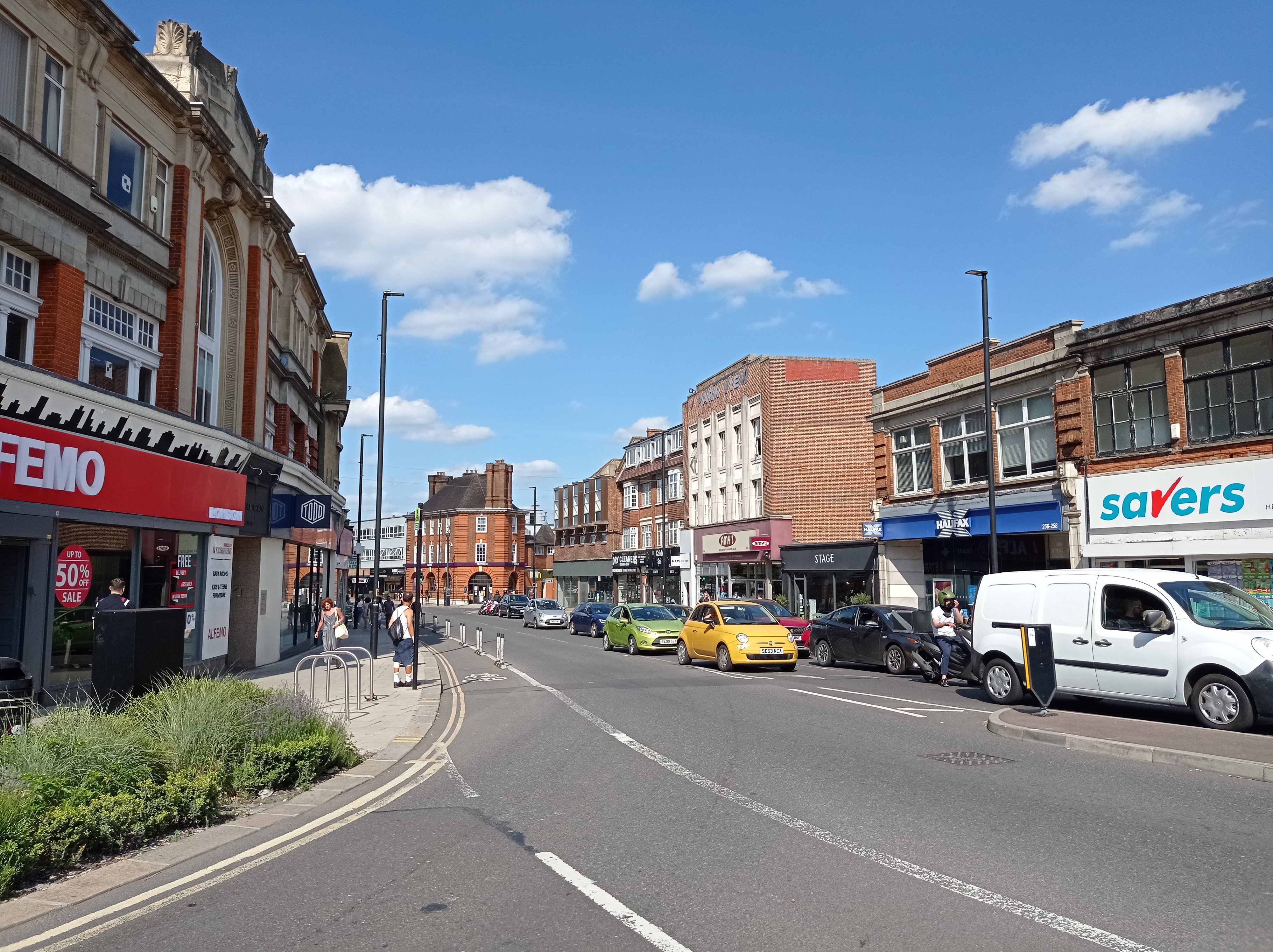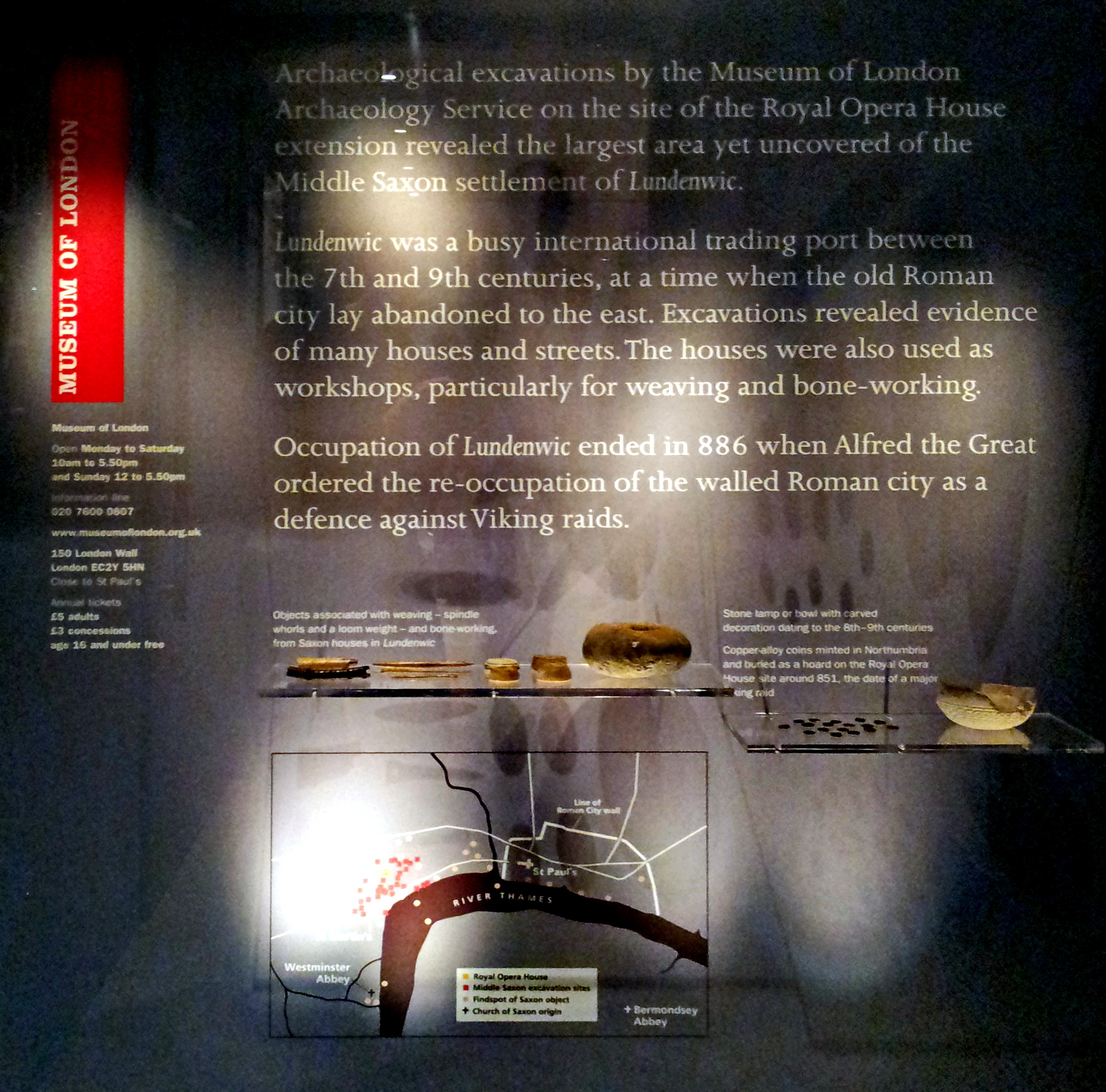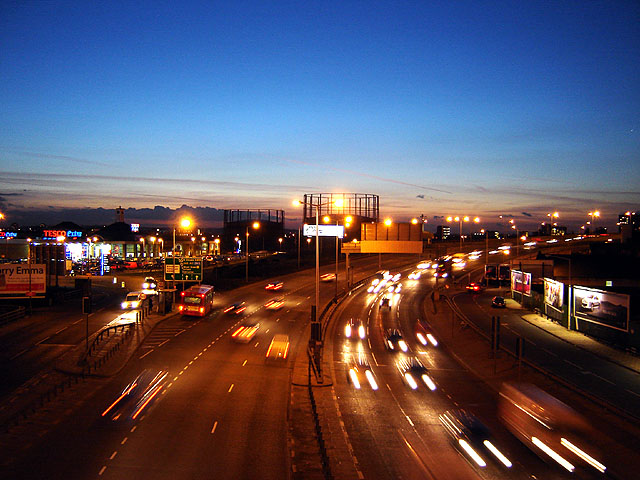|
Greentrees Hospital
Greentrees Hospital was a hospital in Palmers Green, North London. Situated in Tottenhall Road, the hospital was built in 1902 as the Southgate Isolation Hospital, commissioned by Southgate Urban District Council. History The hospital hosted a meeting of the Infectious Hospitals Matrons’ Association on 20 October 1934, hosted by the hospital's matron, Beatrice M. West, who was also honorary secretary of the Association. The meeting was followed by a tour, "when the Cubicle Block for the very up-to-date treatment of Puerperal Fever, Erysipelas, etc., excited keen interest with its equipment of Ultra Violet and Infra Red Rays for the treatment of complicated fever cases." The Mayor of Southgate then welcomed the Association's members at a tea. Beatrice West had been voted into her role as honorary secretary on 24 June 1933. She left Southgate for Barnet Isolation Hospital, her appointment being announced in the British Journal of Nursing in January 1938. In 1936 a new putting ... [...More Info...] [...Related Items...] OR: [Wikipedia] [Google] [Baidu] |
Palmers Green
Palmers Green is a suburban area and electoral ward in North London, England, within the London Borough of Enfield. It is located within the N13 postcode district, around north of Charing Cross. It is home to the largest population of Greek Cypriots outside Cyprus and is often nicknamed "Little Cyprus" or "Palmers Greek". Etymology Recorded as ''Palmers grene'' 1608, 'village green associated with a family called Palmer' (mentioned in local records from the 14th century), from the Middle English ''grene''. History Palmers Green was once a tiny hamlet in the parish of Edmonton, situated at the junction of Green Lanes and Fox Lane. Its population was very small, and there were no more than a few isolated houses in the mid-17th century. Local records mention a Palmers Field in 1204 and a Palmers Grove in 1340. Palmers Green is mentioned as a highway in 1324 (in Westminster Abbey Muniments). By 1801 the area had grown to a village of 54 buildings, including two inns (accordin ... [...More Info...] [...Related Items...] OR: [Wikipedia] [Google] [Baidu] |
Homerton University Hospital
Homerton University Hospital is a teaching hospital in Homerton in the London Borough of Hackney. It is managed by Homerton University Hospital NHS Foundation Trust. History The hospital has its origins in the Homerton Fever Hospital, which opened at the north of the current site in December 1870. A smallpox hospital, built on adjacent land, opened in February 1871. The two facilities merged as the Eastern Fever Hospital in 1884 and a new isolation block was built in 1935. The hospital joined the National Health Service in 1948 as the Eastern Hospital and became increasingly focused on neurological patients before closing down in 1982. Construction of the new Homerton Hospital began in 1982 and was completed in July 1986. The hospital was built at a cost of £20 million and was opened by the Princess Royal in March 1987. As well as replacing the Eastern Hospital, the new hospital replaced the Mothers' Hospital Lower Clapton Road in Hackney, which closed in 1986, and the Ge ... [...More Info...] [...Related Items...] OR: [Wikipedia] [Google] [Baidu] |
Defunct Hospitals In London
{{Disambiguation ...
Defunct (no longer in use or active) may refer to: * ''Defunct'' (video game), 2014 * Zombie process or defunct process, in Unix-like operating systems See also * * :Former entities * End-of-life product * Obsolescence Obsolescence is the state of being which occurs when an object, service, or practice is no longer maintained or required even though it may still be in good working order. It usually happens when something that is more efficient or less risky r ... [...More Info...] [...Related Items...] OR: [Wikipedia] [Google] [Baidu] |
Hospital Buildings Completed In 1902
A hospital is a health care institution providing patient treatment with specialized health science and auxiliary healthcare staff and medical equipment. The best-known type of hospital is the general hospital, which typically has an emergency department to treat urgent health problems ranging from fire and accident victims to a sudden illness. A district hospital typically is the major health care facility in its region, with many beds for intensive care and additional beds for patients who need long-term care. Specialized hospitals include trauma centers, rehabilitation hospitals, children's hospitals, seniors' (geriatric) hospitals, and hospitals for dealing with specific medical needs such as psychiatric treatment (see psychiatric hospital) and certain disease categories. Specialized hospitals can help reduce health care costs compared to general hospitals. Hospitals are classified as general, specialty, or government depending on the sources of income received. A teachi ... [...More Info...] [...Related Items...] OR: [Wikipedia] [Google] [Baidu] |
Health In The London Borough Of Enfield
Health, according to the World Health Organization, is "a state of complete physical, Mental health, mental and social well-being and not merely the absence of disease and infirmity".World Health Organization. (2006)''Constitution of the World Health Organization''– ''Basic Documents'', Forty-fifth edition, Supplement, October 2006. A variety of definitions have been used for different purposes over time. Health can be promoted by encouraging healthful activities, such as regular physical exercise and adequate sleep, and by reducing or avoiding unhealthful activities or situations, such as smoking or excessive Stress (biology), stress. Some factors affecting health are due to Agency (sociology), individual choices, such as whether to engage in a high-risk behavior, while others are due to Social structure, structural causes, such as whether the society is arranged in a way that makes it easier or harder for people to get necessary healthcare services. Still, other factors are be ... [...More Info...] [...Related Items...] OR: [Wikipedia] [Google] [Baidu] |
Healthcare In London
Healthcare in London, which consumes about a fifth of the NHS budget in England, is in many respects distinct from that in the rest of the United Kingdom, or England. History Early history The earliest state hospitals in the UK were set up in London under the management of the Metropolitan Asylums Board which was established by the Metropolitan Poor Act 1867. They supplemented the pattern of voluntary hospitals which had developed, in the case of St Bartholomew's Hospital since 1123. Florence Nightingale campaigned to establish accommodation in infirmaries for the sick separate from that provided by workhouses. She had formulated her schemes for immediate application to London because it was obvious that sweeping reforms could not be absorbed at once throughout the country. In 1860, she proved successful in her campaign and founded, in London, the world's first secular nursing school connected to a fully serving hospital and medical school (St. Thomas' Hospital). Sanatorium ... [...More Info...] [...Related Items...] OR: [Wikipedia] [Google] [Baidu] |
Museum Of London Archaeology
MOLA (Museum of London Archaeology) is an archaeology and built heritage practice and independent charitable company registered with the Chartered Institute for Archaeologists (CIfA), providing a wide range of professional archaeological services to clients in London and across the country. It is one of the largest archaeological service providers in the UK, and is the only one with IRO (Independent Research Organisation) status. MOLA’s operations were historically focused within Greater London but are increasingly nationwide. It employs over 300 staff across 4 locations: the central London headquarters, and further offices in Northampton, Basingstoke, and Birmingham. MOLA is a registered charity (since 2011) with its own academic research strategy and extensive community engagement and education programmes including the Thames Discovery Programme, CITiZAN and the Time Truck. Commercial services offered include expertise and advice at all stages of development from pre-pl ... [...More Info...] [...Related Items...] OR: [Wikipedia] [Google] [Baidu] |
Museum Of London
The Museum of London is a museum in London, covering the history of the UK's capital city from prehistoric to modern times. It was formed in 1976 by amalgamating collections previously held by the City Corporation at the Guildhall Museum (founded in 1826) and of the London Museum (founded in 1912). From 1976 to 4 December 2022 its main site was located in the City of London on the London Wall, close to the Barbican Centre, as part of the Barbican complex of buildings created in the 1960s and 1970s to redevelop a bomb-damaged area of the city. The museum has the largest urban history collection in the world, with more than six million objects. That site was a few minutes' walk north of St Paul's Cathedral, overlooking the remains of the Roman city wall and on the edge of the oldest part of London, now its main financial district. It is primarily concerned with the social history of London and its inhabitants throughout time. The museum is jointly controlled and funded by th ... [...More Info...] [...Related Items...] OR: [Wikipedia] [Google] [Baidu] |
Whittington Hospital
Whittington Hospital is a district general and teaching hospital of UCL Medical School and Middlesex University School of Health and Social Sciences. Located in Upper Holloway, it is managed by Whittington Health NHS Trust, operating as Whittington Health, an integrated care organisation providing hospital and community health services in the north London boroughs of Islington and Haringey. Its Jenner Building, a former smallpox hospital, is a Grade II listed building. History The first hospital on the site was St Anthony's Chapel and Lazar House, a facility built for lepers in 1473. It closed during the Dissolution of the Monasteries in the mid-16th century. The current hospital has its origins in the Small Pox and Vaccination Hospital, built in 1848. It was designed by the architect Samuel Daukes as one of two isolation hospitals in London (the other was the London Fever Hospital in Liverpool Road) intended to care for smallpox patients during the epidemic at that time. Th ... [...More Info...] [...Related Items...] OR: [Wikipedia] [Google] [Baidu] |
St Ann's Hospital
St Ann's Hospital is a mixed healthcare campus in South Tottenham in the London Borough of Haringey, England, and is the headquarters for Barnet, Enfield and Haringey Mental Health NHS Trust. It also formerly housed the Haringey NHS primary care trust Primary care trusts (PCTs) were part of the National Health Service in England from 2001 to 2013. PCTs were largely administrative bodies, responsible for commissioning primary, community and secondary health services from providers. Until 31 May .... History The Metropolitan Asylums Board purchased the site where St Ann's Hospital now stands in August 1892. The hospital, which was initially known as the North Eastern Fever Hospital and treated patients suffering from fever and diphtheria, opened in October 1892. Building work on the administration block began in 1898 and construction of the laundry began the following year. The Metropolitan Asylum Board was liquidated in 1929 and the hospital came under the administration of ... [...More Info...] [...Related Items...] OR: [Wikipedia] [Google] [Baidu] |
National Health Service (England)
The National Health Service (NHS) is the publicly funded healthcare system in England, and one of the four National Health Service systems in the United Kingdom. It is the second largest single-payer healthcare system in the world after the Brazilian Sistema Único de Saúde. Primarily funded by the government from general taxation (plus a small amount from National Insurance contributions), and overseen by the Department of Health and Social Care, the NHS provides healthcare to all legal English residents and residents from other regions of the UK, with most services free at the point of use for most people. The NHS also conducts research through the National Institute for Health and Care Research (NIHR). Free healthcare at the point of use comes from the core principles at the founding of the National Health Service. The 1942 Beveridge cross-party report established the principles of the NHS which was implemented by the Labour government in 1948. Labour's Minister f ... [...More Info...] [...Related Items...] OR: [Wikipedia] [Google] [Baidu] |
Edmonton, London
Edmonton is a town in north London, England within the London Borough of Enfield, a local government district of Greater London. The northern part of the town is known as Lower Edmonton or Edmonton Green, and the southern part as Upper Edmonton. Situated north-northeast of Charing Cross, it borders Enfield to the north, Chingford to the east, and Tottenham to the south, with Palmers Green and Winchmore Hill to the west. The population of Edmonton was 82,472 as of 2011. The town forms part of the ceremonial county of Greater London and until 1965 was in the ancient county of Middlesex. Historically a parish in the Edmonton Hundred of Middlesex, Edmonton became an urban district in 1894, and a municipal borough in 1937. Local government took place at the now-demolished Edmonton Town Hall in Fore Street between 1855 and 1965. In 1965, following reform of local government in London, the municipal borough and former parish of Edmonton was abolished, merging with that of Enf ... [...More Info...] [...Related Items...] OR: [Wikipedia] [Google] [Baidu] |





.jpg)

Aug2005.jpg)
